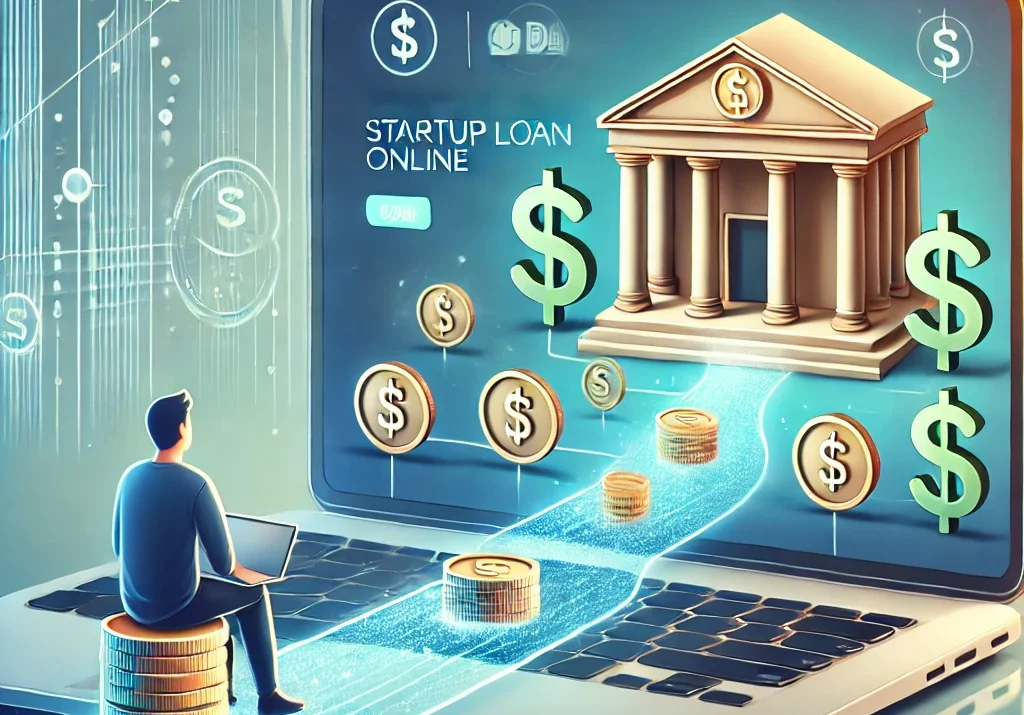To get a startup business loan with no money may seem daunting, but several financing options exist for entrepreneurs with minimal capital. Whether you’re looking to fund a new venture or grow an existing one, online lenders, government-backed programs, and alternative sources of funding are available to support startups. This guide explores various options for securing a loan online without upfront capital.
With various financing options available, get a startup business loan with no money is possible. From government-backed loans to crowdfunding and alternative lending platforms, entrepreneurs can access the capital needed to launch their businesses online. Whether you choose a loan, a line of credit, or crowdfunding, having a solid business plan is essential to success.
| Term loans | $10,000 to $10 million |
| Business lines of credit | Up to $250,000 |
| Commercial real estate loans | Up to $10 million |
| SBA loans | Up to $5.5 million |
| Equipment Financing | Up to $500,000 |
| Equipment Financing | $50,000 to $150,000 |
1. Explore Government-Backed Loan Programs
Government-backed loans are among the best options for startups with limited funds. Programs like SBA (Small Business Administration) loans help small businesses access financing even when they lack substantial upfront capital.
- The SBA Microloan Program offers loans of up to $50,000 to small businesses and startups. These loans are provided by nonprofit intermediary lenders and often have lower interest rates. While SBA loans generally require a good credit score, the microloan program is more flexible, making it easier for startups to qualify.
- The SBA 7(a) Loan Program provides loans for working capital, equipment, and other business needs. These loans are available through approved lenders and can be used to start or expand a business. Collateral may be required but is often more flexible than traditional loans.
2. Look for Online Lenders and Alternative Financing
If government-backed loans don’t fit your needs, many online lenders offer startup business loans with no upfront capital. These platforms simplify the application process, making it easier for new entrepreneurs to access funding.
- Peer-to-peer lending platforms like LendingClub and Prosper connect borrowers with individual investors willing to fund small businesses. These platforms may have more flexible criteria than traditional lenders, offering loans without collateral. However, interest rates can vary widely based on your credit profile.
- Online Business Loan Providers: Online lenders like Kabbage and Fundbox provide fast approvals and are ideal for startups needing quick access to capital. These lenders typically focus on the potential of your business and cash flow rather than upfront capital or a perfect credit score. For example, Kabbage offers loans up to $250,000.
3. Consider Business Credit Cards and Lines of Credit
Business credit cards and lines of credit can also provide access to funds for your startup. While these aren’t traditional loans, they can help cover initial expenses and build business credit.
- Business credit cards like Chase Ink Business Preferred or American Express Business Gold offer credit without needing upfront capital. These cards often come with rewards programs that allow you to earn cashback or points on business purchases. Be mindful of interest rates and have a repayment strategy to avoid accumulating debt.
- A business line of credit provides the flexibility of borrowing only what you need, paying interest only on the amount used. Lenders like BlueVine offer lines of credit up to $250,000, which can help startups manage cash flow.
4. Seek Out Crowdfunding Platforms
Crowdfunding is another way to raise money without a traditional loan. Platforms like Kickstarter and Indiegogo allow entrepreneurs to pitch their business ideas to the public, raising funds from supporters. Crowdfunding is ideal for startups with innovative products or services.
Equity crowdfunding allows investors to receive a stake in your company in exchange for funding. Platforms like StartEngine and Wefunder enable startups to raise capital by offering equity. This is particularly useful for tech startups needing significant capital to launch.


5. Leverage Invoice Financing or Factoring
For startups with clients but needing working capital to maintain cash flow, invoice financing or factoring is a viable solution. These methods allow immediate payment on outstanding invoices, helping maintain operations without waiting for clients to pay.
- Fundbox offers invoice financing, allowing businesses to borrow against outstanding invoices. The lender provides a percentage of the invoice upfront, collecting payment from the client when due. This provides quick access to funds without traditional collateral.
- In factoring, a company sells its accounts receivable to a third-party factoring company at a discount. The factoring company collects the full invoice amount from the client, providing upfront cash to the business. While it can be more expensive, factoring is an effective solution for startups needing liquidity.
6. Look for Grants and Competitions
Don’t overlook small business grants and competitions, which provide funding without repayment. These are typically available to startups working in specific industries like technology or healthcare.
Small Business Grants: Grants from government agencies or private organizations can help fund startups. For example, the Small Business Innovation Research (SBIR) Program provides grants to small businesses engaged in scientific research.
Startup Competitions
Startup competitions can also provide funding. Programs like Y Combinator and Techstars offer seed funding and mentorship to promising startups, providing not only financial support but also networking and growth opportunities.
Related articles:
What percent of 18-29-year-olds are investing in the stock market?
Why is it important to start investing as early as possible?
How Much Money Should You Have Saved by Age 30?
Common Mistakes People Make When Investing and How to Avoid Them
Behaviors That Prevent Smart Investing Decisions and How to Overcome Them
How to Invest in Gold and Silver: A Step-by-Step Guide
Sources:
- https://www.nerdwallet.com/article/small-business/how-to-get-a-business-loan-with-no-money
- https://www.liveplan.com/blog/how-to-get-a-startup-business-loan-with-no-money/
- https://www.themuse.com/advice/how-to-get-a-startup-business-loan-with-no-money
- https://www.bankrate.com/loans/small-business/how-to-get-a-startup-business-loan/#howto










